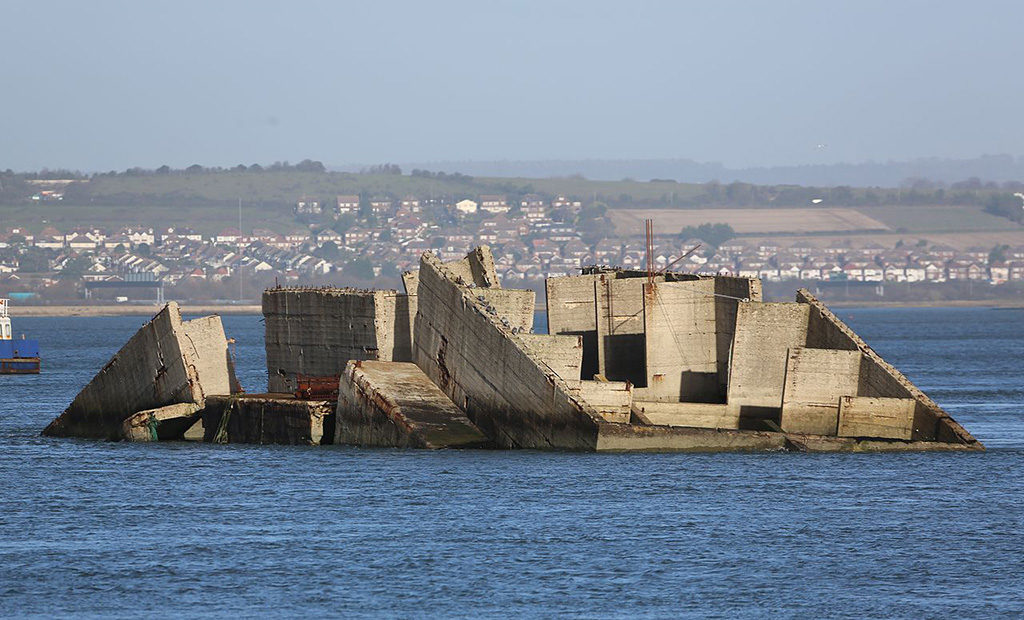- Point of Interest
- 103 Ferry Rd, Hayling Island PO11 0DQ, Royaume-Uni
As part of the planning for Operation Overlord, it was decided that artificial harbours would be needed in order to offload the heavy and bulky cargo needed to mount a successful invasion of Normandy. These harbours were built in Britain, towed across the channel and then assembled by the army once in the waters surrounding France.
Hayling Island and Langstone Harbour were both sites where ‘Mulberry Harbours’ were constructed before they were towed across the Channel with the Allied invasion force on D-Day. These artificial harbours, with the codename Mulberry, allowed the Allies to disembark the crucial cargo needed to support the invasion. Artificial harbours were necessary because of the lack of big port facilities in Normandy.
The harbour at Omaha Beach had to be abandoned, due to storm damage less than a month after D-Day. But the Mulberry Harbour at Gold Beach, nicknamed Port Winston, was used to land 4 million tons of supplies, 2.5 million soldiers and half a million vehicles before the Allies took the port of Antwerp six months later. Assembled by the Royal Engineers, the completed harbour consisted of 33 jetties and 16 km of floating roadways, allowing both men, supplies and vehicles to easily be landed on the Normandy beaches.
The artificial harbours were created from five constituent parts, which, once assembled, correctly formed a harbour approximately of the same size as that of Dover. Crucial to creating the calm conditions necessary for a harbour were the breakwaters. Two separate designs were used: the ‘Bombardons’, which were floating outer breakwaters, and static breakwaters. These consisted of ‘Corncobs’, blockships which were sunk once in place, and concrete ‘Phoenix’ caissons, used to hold them in place. Once all of these parts were in place, a ‘Gooseberry’ was created: the calm waters required to construct the rest of the harbour. The final parts were the floating roadways or piers (‘Beetles’ or ‘Whales’) and pier heads (‘Spuds’) or landing wharves at which ships were unloaded.
Where the Mulberry Harbour components were built, on the shoreline of Langstone Harbour, is open to the public. A faulty caisson is left in situ at place of construction.


